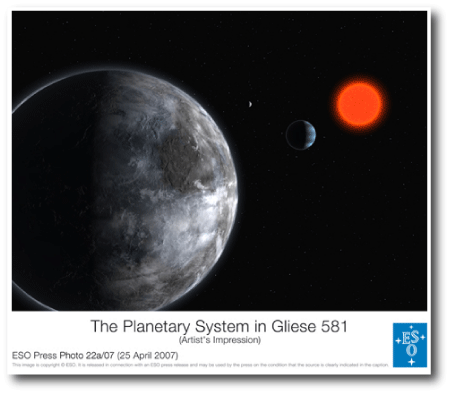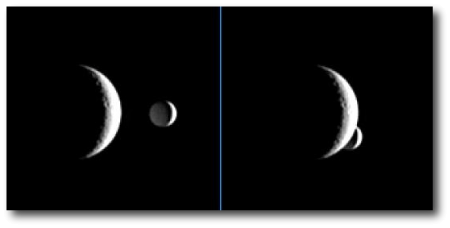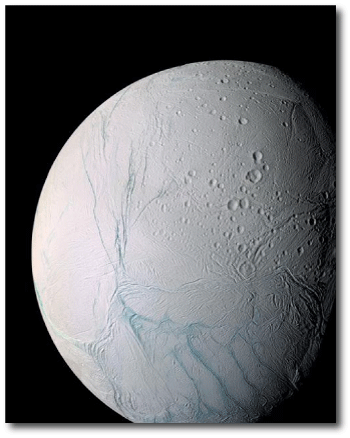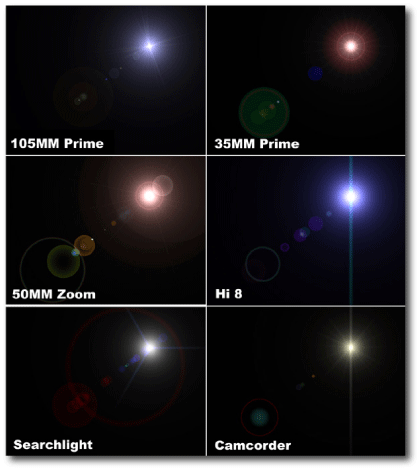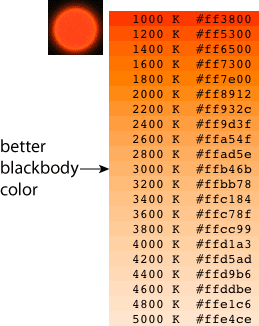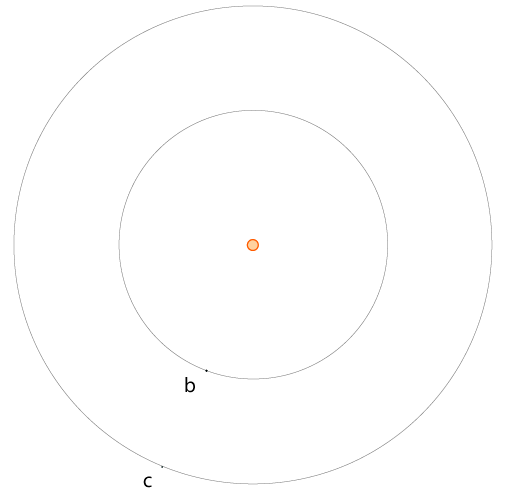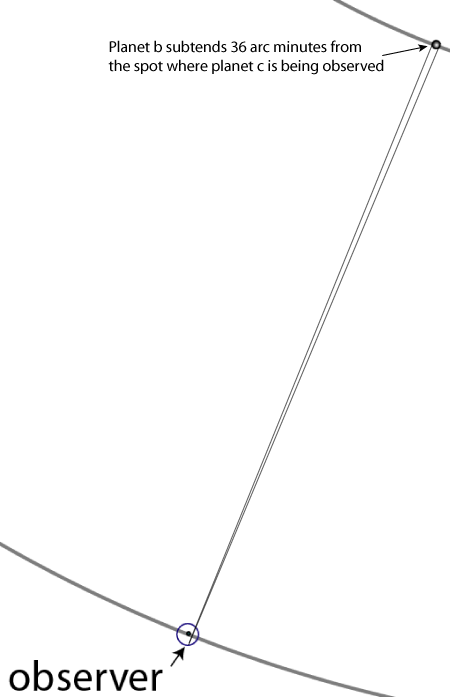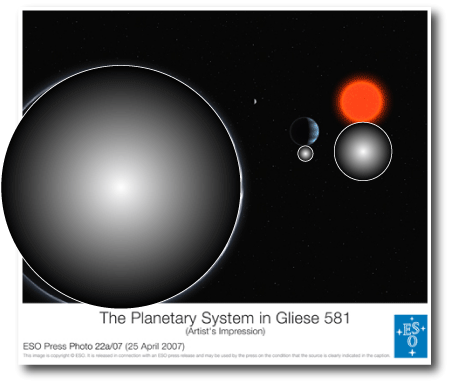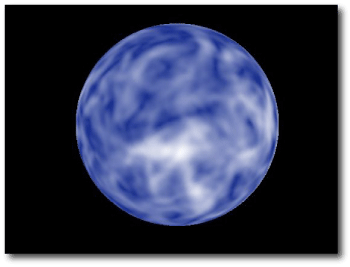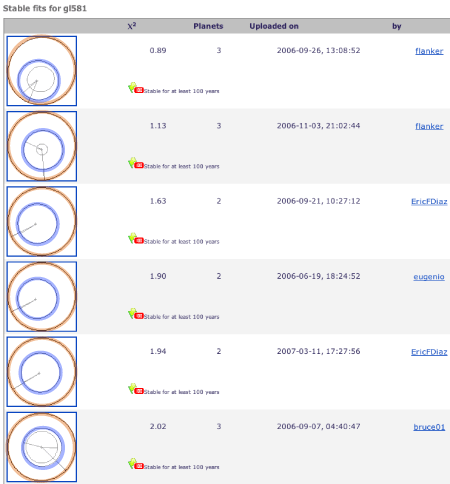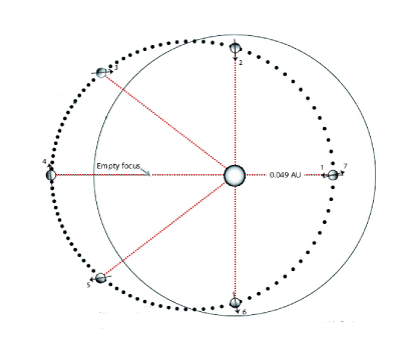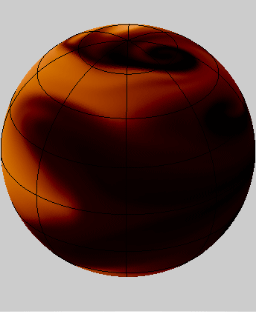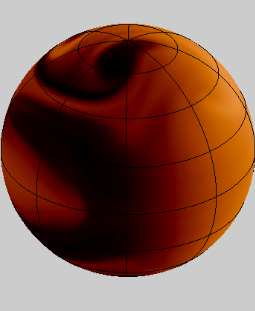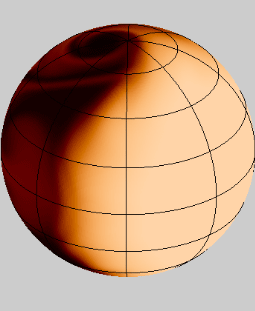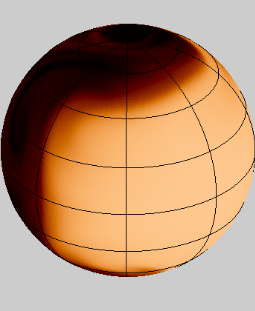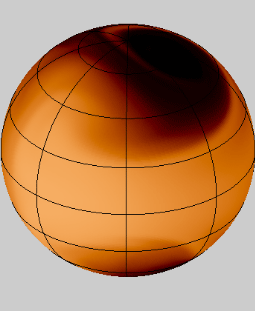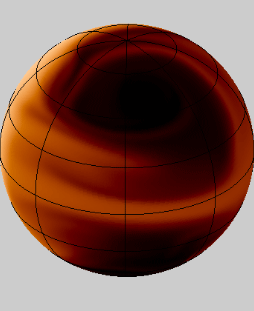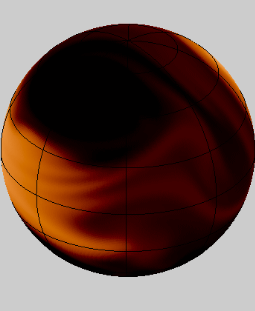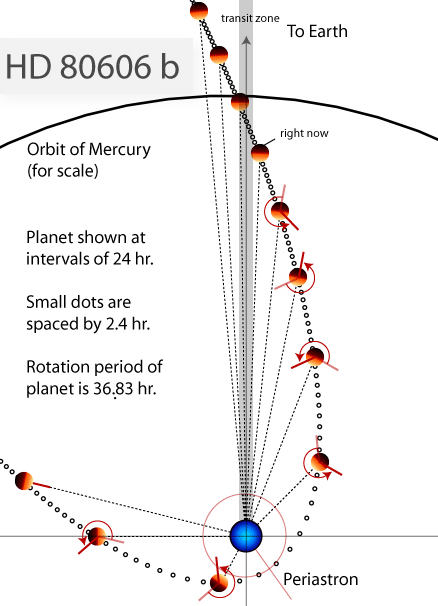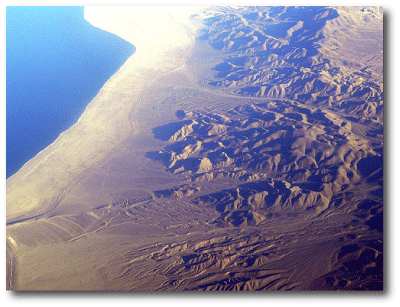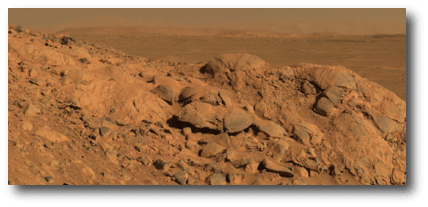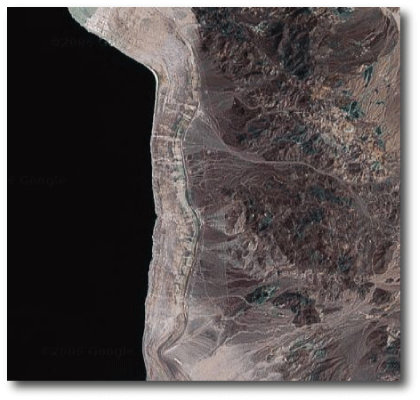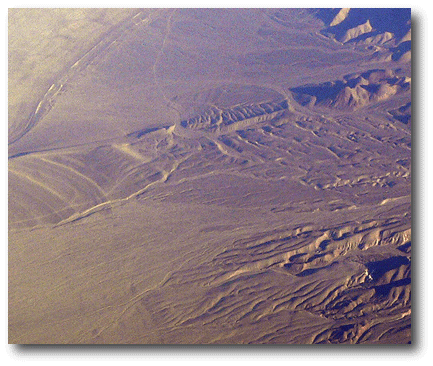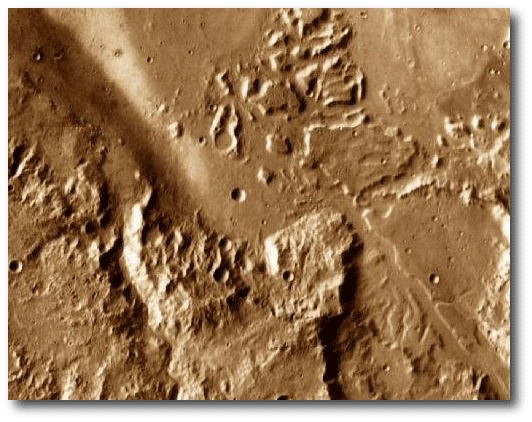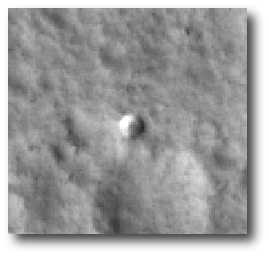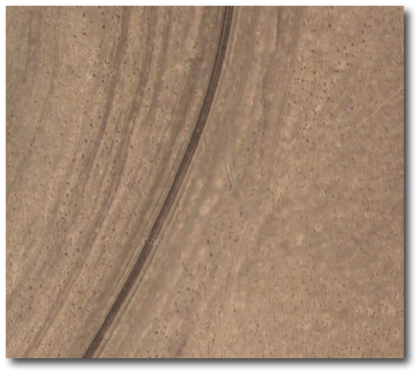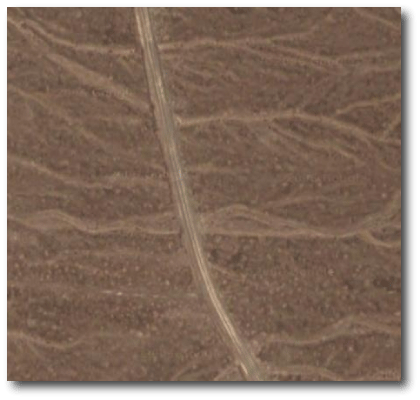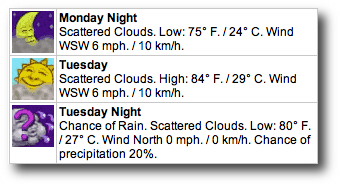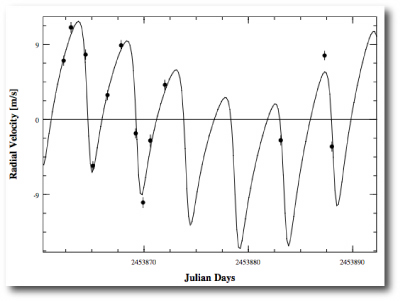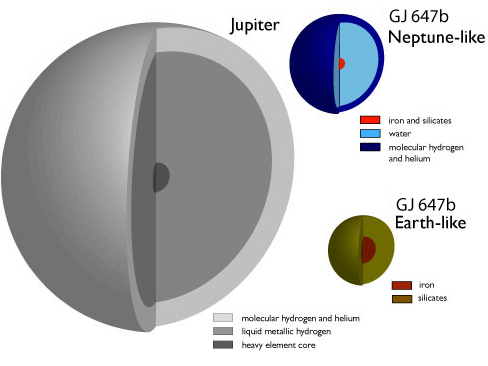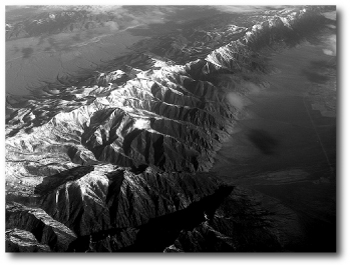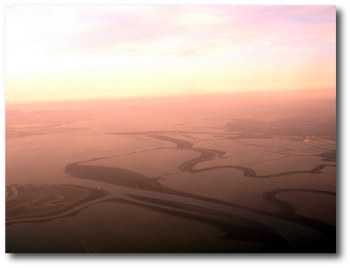
Image Source.
While talking to a reporter this morning, I ventured 1000:1 odds against Gl 581 “c” harboring a clement surface or a temperate ocean-atmospheric interface. Too bad we haven’t yet tapped into the galactic market — I’d like to hedge my bet with the purchase of an appropriate derivative security.
Habitable or not, Gl 581 c is pointing toward better worlds to come. As I remarked in the past two posts (1,2), we’re guessing that “c” formed beyond the snowline and migrated inward to its current position just outside the nebulous inner boundary of the habitable zone.
Here’s a 1.1 MB animation of Jonathan Langton’s simulation of the flow pattern on Gl 581 c. The clip shows 30 hours worth of weather on our model of the planet:
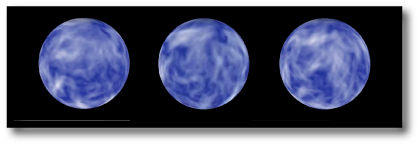
First a few technical details. We model the planet’s lower radiative stratosphere with a 2D compressible hydrodynamics code. We use a time-dependent model for radiative heating and cooling. The planet is assumed to be spin-synchronous, so that it rotates on its axis once every 12.9 days. The planetary mass is five-Earth masses (I’m holding out for a transit on May 7th!), and we take a radius of 1.7 Earth radii. The orbit is assumed circular, the luminosity of the star is 0.013 solar luminosities, and the planetary “Bond” albedo is assumed to be 55%. At the layer we’re modeling, we assume a molecular weight of 25, and an atmospheric column depth of 2500 kg/m^2. This corresponds to an atmospheric pressure at the troposphere-stratosphere interface of order 400 milli bar. We assume an equilibrium night-side temperature of 250K (as a result of heat welling up from beneath).
The animation shows the sub-stellar hemisphere. The weather on the planet rapidly reaches an equilbrium flow pattern with small windspeeds (of order 3-4 m/s). The temperature at the substellar point equilibrates at 330K.
In the deeper, convective layers of the atmosphere, we expect fierce thunderstorms to occur. In analogy with thunderstorms on Earth driving anvils into the stratosphere, we model the effect of the thunderstorms by supplying a random heating term to the stratospheric flow. We definitely welcome constructive criticism of this approach, since we’re neophytes in the exo-terrestrial planet climate business. For the technically inclined, here’s a .pdf write-up that details our radiation-hydrodynamical scheme (the example planet in the write-up is HD 80606b, rather than Gl 581c, but the numerical method is the same).
So what’s being plotted? We identified regions of higher wind speed with the formation of high water clouds (white) and regions of low wind speed with more transparent layers in which the spectrum of reflected starlight is controlled by Raleigh scattering (blue). The patterns in the atmospheric animation are thus controlled by atmospheric pressure waves and the random thermal variations driven by the thunderstorms, and not by actual advection of air.
It’s interesting to compare this with the animation of the (rotating) Earth taken by the Galileo probe as it flew by to pick up a gravity assist.

